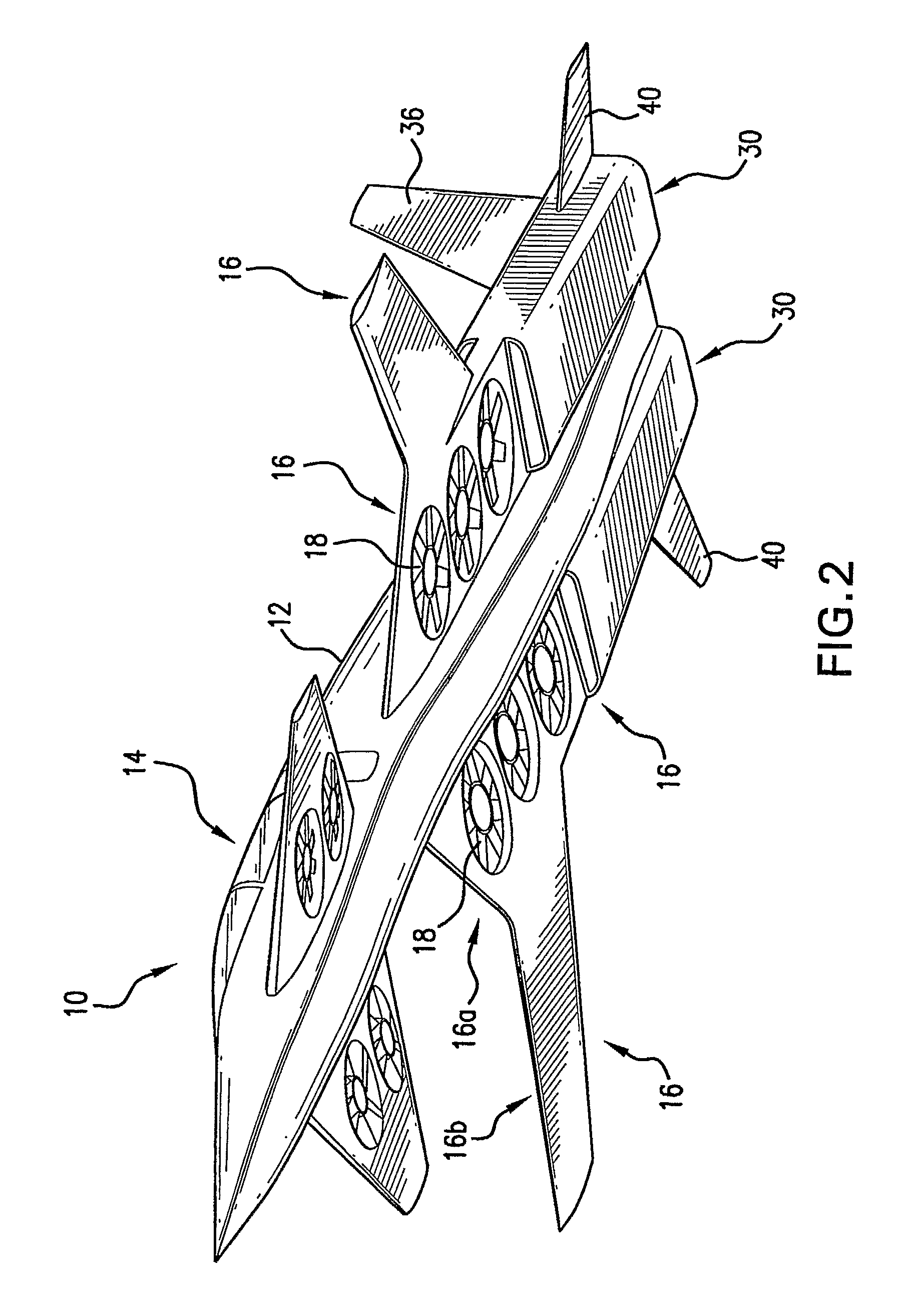Hybrid jet/electric VTOL aircraft
a hybrid jet and electric technology, applied in the field of fixed-wing vtol aircraft, can solve the problems of inefficient high thrust loading and thrust inefficiency of prior art vectored thrust vtol aircraft in forward flight, and achieve the effect of high thrust loading, high thrust force and high thrust capability
- Summary
- Abstract
- Description
- Claims
- Application Information
AI Technical Summary
Benefits of technology
Problems solved by technology
Method used
Image
Examples
Embodiment Construction
[0041]The overall configuration of a manned embodiment 10 of an aircraft incorporating a lift / propulsion system according to the invention is illustrated in FIGS. 1-5. The aircraft 10 has a fuselage 12 with a cockpit / cabin 14. The main wing portion 16 of the aircraft 10 extends from about the lengthwise mid-point of the fuselage 12 to the rear of the aircraft 10. Each main wing has a generally rectangular root portion 16a, with a rearward-swept leading edge 18, and a forward-swept, outboard wing extension portion 16b. (The root portion 16a is actually a strake that can be thought of as part of the fuselage.) This forward-sweep configuration of the main wings provides enhanced maneuverability and control, particularly during VTOL and transition to forward flight.
[0042]In addition to the main wing portion 16, the aircraft 10 includes canards 20 extending from the fuselage 12 and located lengthwise generally proximate the cockpit / cabin 14. The canards 20 provide additional lift and enh...
PUM
 Login to View More
Login to View More Abstract
Description
Claims
Application Information
 Login to View More
Login to View More - R&D
- Intellectual Property
- Life Sciences
- Materials
- Tech Scout
- Unparalleled Data Quality
- Higher Quality Content
- 60% Fewer Hallucinations
Browse by: Latest US Patents, China's latest patents, Technical Efficacy Thesaurus, Application Domain, Technology Topic, Popular Technical Reports.
© 2025 PatSnap. All rights reserved.Legal|Privacy policy|Modern Slavery Act Transparency Statement|Sitemap|About US| Contact US: help@patsnap.com



